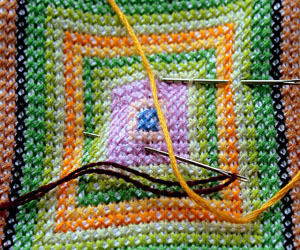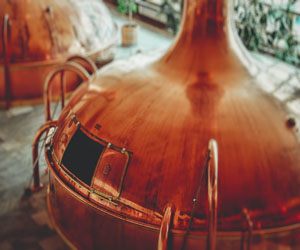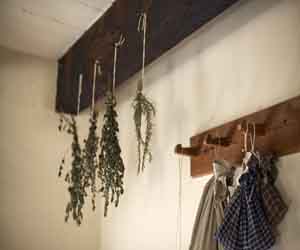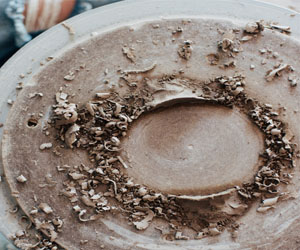


Needle And Thread

The needle and thread, a seemingly humble pair of tools, have been the foundation of countless artistic, practical, and creative endeavors throughout history. From the basics of sewing to intricate embroidery and textile art, this duo has left an indelible mark on human culture, craftsmanship, and ingenuity.
A Needle's Versatility: The needle, one of the most ancient human tools, is a marvel of simplicity and utility. With its sharp point and slender body, it serves a multitude of purposes beyond sewing fabric. In addition to mending clothes, needles have been used for creating intricate lace, beading, leatherwork, and even medical procedures. The type and size of a needle can vary greatly depending on the task at hand, from darning needles for repairing socks to embroidery needles for crafting intricate designs.
The Thread's Transformative Power: Thread, on the other hand, is a slender strand of material that comes in numerous forms, including cotton, silk, wool, and synthetic fibers. Its primary function is to connect, bind, and adorn. When combined with the needle, thread takes on the role of an artist's brush, creating intricate designs, securing seams, and adding decorative elements to fabrics. The choice of thread can dramatically impact the final outcome, from the sheen of silk to the durability of polyester.
Sewing And Fabric Mending: At its core, the needle and thread serve the practical purpose of sewing and mending fabric. From fixing a torn hem to attaching buttons, these tools are essential for extending the lifespan of clothing and textiles. This ability to repair and restore not only saves money but also contributes to sustainable and eco-friendly practices by reducing waste.
Embroidery And Artistry: One of the most celebrated applications of the needle and thread is in the realm of embroidery. This art form involves the use of different stitches and thread colors to create intricate and beautiful designs on fabric. It has been used for centuries to embellish clothing, linens, and decorative items, adding a touch of elegance and personalization to everyday objects.
Cultural And Traditional Significance: Needlework, often passed down through generations, carries cultural and traditional significance in many societies. It can tell stories, showcase regional motifs, and connect individuals to their heritage. Each culture has its unique stitching techniques and designs, making the needle and thread a powerful tool for cultural preservation.
Modern Applications: In today's world, the needle and thread have not been replaced by modern technology but have instead found new avenues. They remain essential in the creation of custom clothing, textile art, and DIY crafts. The art of hand-sewing and embroidery continues to thrive alongside technological innovations like sewing machines and computerized embroidery equipment.
The needle and thread may seem unassuming, but they carry a rich legacy of utility, creativity, and cultural significance. As you embark on your own sewing, mending, or embroidery projects, remember that these tools are not just about practicality but also about artistry and a connection to a timeless tradition. They have been, and continue to be, the threads that stitch together the fabric of human creativity and ingenuity.
 The Mashing Process: Mashing is the first key step in brewing. It involves soaking the crushed malt in hot water to extract sugars and create a sugary liquid known as wort. The temperature and duration of mashing impact the flavor, body, and sweetness of the beer. Different mashing techniques, such as single infusion or step mashing, allow brewers to tailor the wort to their desired specifications.
The Mashing Process: Mashing is the first key step in brewing. It involves soaking the crushed malt in hot water to extract sugars and create a sugary liquid known as wort. The temperature and duration of mashing impact the flavor, body, and sweetness of the beer. Different mashing techniques, such as single infusion or step mashing, allow brewers to tailor the wort to their desired specifications.
Boiling And Hop Addition: The next step is boiling the wort and adding hops. Boiling sterilizes the wort and extracts essential oils and bitterness from the hops. The timing and types of hops used in this phase greatly influence the beer's aroma and bitterness. Brewers carefully calculate when to add hops to achieve the desired flavor profile.
Fermentation: Fermentation is where the magic happens. Yeast is introduced to the wort, and it consumes the sugars, producing alcohol and carbon dioxide. Fermentation temperatures, yeast strains, and fermentation time are all critical factors that influence the beer's taste and aroma. For example, ale yeast works at warmer temperatures, producing fruity esters, while lager yeast operates at cooler temperatures, yielding a clean and crisp taste.
Conditioning: After fermentation, beer typically undergoes a conditioning phase. This can occur in the fermenter or in bottles or kegs. Conditioning allows the flavors to mature, any off-flavors to mellow, and for carbonation to develop. The length of conditioning can vary greatly depending on the beer style, with some beers requiring weeks or even years of aging.






Crafting A Sustainable Future
 The Essence Of Green DIY Projects
The Essence Of Green DIY Projects
Green DIY projects combine creativity with sustainability, providing a platform for you to express yourself while making environmentally responsible choices. These projects encompass a wide range of activities, from upcycling furniture and crafting eco-friendly home decor to making your own natural cleaning products or gardening with organic, homegrown produce.
Environmental Benefits
One of the most significant advantages of green DIY projects is their environmental impact. By consciously choosing sustainable materials, repurposing items, and reducing waste, these projects contribute to a greener and more eco-friendly world. They help lower the carbon footprint by diverting usable materials from landfills, conserving resources, and minimizing the environmental impact of manufacturing and transportation.
Promoting Sustainability
Green DIY projects promote sustainability in multiple ways. They encourage you to use sustainable, eco-friendly materials, such as reclaimed wood, bamboo, recycled fabrics, and non-toxic paints. By crafting your own goods, you also reduce the demand for mass-produced items, which often involve harmful chemicals, excessive packaging, and wasteful practices.
Cost-Efficiency
Many green DIY projects offer cost-efficiency. Making your own household products, for example, can save you money in the long run. Crafting your own furniture or decor can be more economical than buying new items, especially if you upcycle or repurpose materials you already have or find in thrift stores.
Herbs For Homemade Remedies
 Creating Your Herbal Toolkit
Creating Your Herbal Toolkit
To get started with herbs for homemade remedies, it's essential to build a basic herbal toolkit. Here are some key herbs to consider:
1. Lavender: Known for its soothing properties, lavender can help alleviate stress, anxiety, and insomnia. It's often used in teas, essential oils, and as a topical treatment for burns and insect bites.
2. Echinacea: Echinacea is celebrated for its immune-boosting capabilities. It's commonly used to fend off or reduce the duration of colds and flu.
3. Aloe Vera: Aloe vera is renowned for its ability to heal skin ailments, from sunburn to minor cuts and wounds. Its gel is a go-to remedy for soothing and repairing damaged skin.
4. Chamomile: Chamomile is a gentle herb used to calm digestive issues and promote relaxation. It's often found in teas, but its essential oil can be used topically for various skin conditions.
5. Peppermint: Peppermint is a versatile herb known for aiding digestion and alleviating headaches. It can be used in teas, infused oils, or as a topical rub.
6. Calendula: Calendula is prized for its skin-healing properties and is a primary ingredient in salves, creams, and ointments for skin irritations and rashes.
7. Ginger: Ginger is a potent anti-nausea and anti-inflammatory herb. It's an excellent addition to teas or can be consumed in various forms for digestive relief.
8. Thyme: Thyme's antimicrobial and antibacterial properties make it a great remedy for respiratory issues. It's often used in homemade cough syrups and teas.
Shaping Civilizations From Clay
 Neolithic Advancements: The Neolithic period (circa 10,000 to 2,000 BCE) marked a significant leap in the history of pottery. During this time, humans developed agriculture, leading to the need for more efficient food storage and preparation. This spurred the refinement of pottery techniques and the introduction of pottery wheels for shaping clay. Various cultures worldwide, from ancient China to Mesopotamia, independently discovered pottery and ceramic techniques that would continue to evolve over the millennia.
Neolithic Advancements: The Neolithic period (circa 10,000 to 2,000 BCE) marked a significant leap in the history of pottery. During this time, humans developed agriculture, leading to the need for more efficient food storage and preparation. This spurred the refinement of pottery techniques and the introduction of pottery wheels for shaping clay. Various cultures worldwide, from ancient China to Mesopotamia, independently discovered pottery and ceramic techniques that would continue to evolve over the millennia.
Egypt And Mesopotamia: Two of the world's earliest advanced civilizations, Egypt and Mesopotamia, played pivotal roles in the history of pottery. In ancient Egypt, pottery was not only used for practical purposes but also for religious and artistic expression. The Egyptians produced ornate and finely glazed ceramics, including funerary objects and sculptures.
In Mesopotamia, the cradle of civilization, clay tablets were employed for writing, while pottery was used to store and transport valuable commodities. The invention of the potter's wheel in this region revolutionized ceramic production and allowed for greater consistency and intricacy in design.
Greek And Roman Contributions: The Greeks elevated pottery to an art form. Their beautifully painted pottery, featuring intricate designs and intricate depictions of daily life and mythology, are now highly sought-after by collectors and historians. Greek pottery remains an enduring legacy of their artistic achievements.
The Romans continued the tradition of fine ceramic work, adopting Greek influences and creating their own distinctive styles. Roman pottery production was highly organized, and their ceramics were traded and exported throughout the vast Roman Empire.